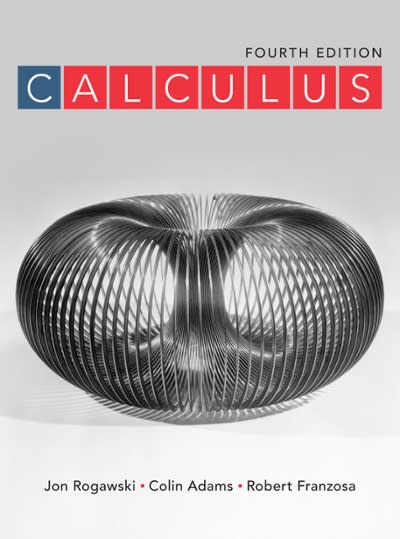Pappus's Theorem (also called Guldin's Rule), which we introduced in Section 8.4 , states that the area
Question:
Pappus's Theorem (also called Guldin's Rule), which we introduced in Section 8.4 , states that the area of a surface of revolution \(\mathcal{S}\) is equal to the length \(L\) of the generating curve times the distance traversed by the center of mass. Use Eq. (14) to prove Pappus's Theorem. If \(C\) is the graph \(z=g(y)\) for \(c \leq y \leq d\), then the center of mass is defined as the point \((\bar{y}, \bar{z})\) with
\[
\bar{y}=\frac{1}{L} \int_{C} y d s, \quad \bar{z}=\frac{1}{L} \int_{C} z d s
\]

Fantastic news! We've Found the answer you've been seeking!
Step by Step Answer:
Related Book For 

Question Posted:





